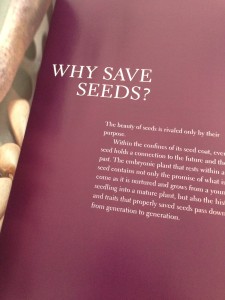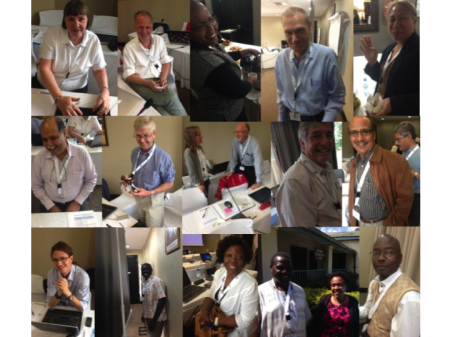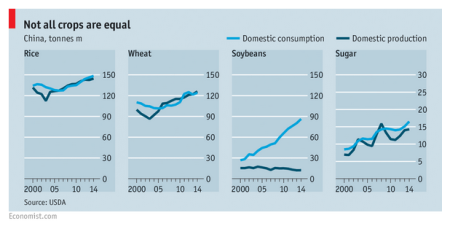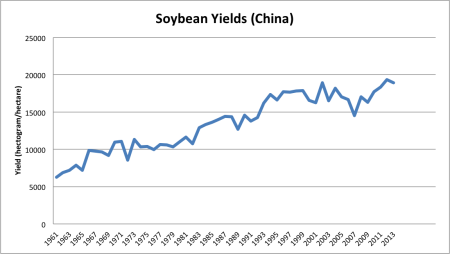 No better way to find out why — and how — than by reading The Seed Garden: The Art & Practice of Seed Saving. And I’m not just saying that because I just got my free copy. It really is a fabulous book, as beautiful as it is useful. Thank you, Seed Savers Exchange.
No better way to find out why — and how — than by reading The Seed Garden: The Art & Practice of Seed Saving. And I’m not just saying that because I just got my free copy. It really is a fabulous book, as beautiful as it is useful. Thank you, Seed Savers Exchange.
In the footsteps of Vavilov…
It is an invisible, apolitical band of dedicated researchers around the world who maintain these gene bank insurance policies. They walk in the footsteps of Vavilov, who died of starvation in prison during World War II, while his staff suffered a similar fate during the Siege of Leningrad rather than compromise the seeds they had saved for humanity.
Here are some members of that band.

Catching up with CROPS 2015
The CROPS 2015 conference on Improving Agriculture Through Genomics in on. Actually it’s almost finished. Sorry. But you can read about the keynote. And follow what’s left on Twitter. Maybe someone will explain what’s wrong with China’s soybeans.
For all the soybeans in China
There’s a chart in last week’s issue of The Economist that really got my attention. Here it is:

What in tarnation has been happening to soybean production in China? It looks really bad, especially compared to what’s happening to the other crops. And it’s important. Soybeans are now a big proportion of overall food imports.

So is it that Chinese farmers are just growing less of the crop? Well, FAOStat says no, it’s that yields have been stagnating of late:

But this is a problem that, for example, the US and Brazil seem not to be having. It’s not as if Chinese breeders and gene-jockeys aren’t trying. And they have plenty of genetic diversity available. So what’s going on? Maybe one of our readers can explain.
Early modern maize
 There’s a controversy brewing over whether it is Shakespeare or Drake holding an ear of maize on the frontispiece of Gerard’s Herbal. But what I really want to know is what’s that other thing in his right hand.
There’s a controversy brewing over whether it is Shakespeare or Drake holding an ear of maize on the frontispiece of Gerard’s Herbal. But what I really want to know is what’s that other thing in his right hand.
